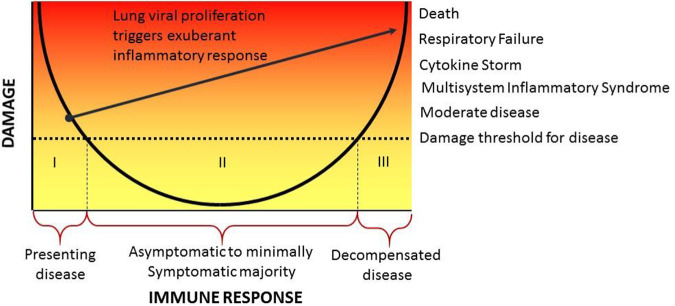FIG 1.
Pathogenesis of COVID-19 in the context of the DRF. The clinical manifestations of COVID-19 suggest there are three types of individual responses to SARS-CoV-2 infection (indicated as “I,” “II,” and “III” in the figure). Group I consists of individuals who mount an inadequate response to infection and cannot control the virus. For some such individuals, this leads to viral proliferation that triggers an exuberant inflammatory response (line leading from group I to group III). Group II consists of individuals who are asymptomatic or minimally symptomatic after infection with immune responses that effectively control the virus without mediating sufficient host damage to impair homeostasis. Group III consists of individuals that either mount an initial tissue-damaging response to SARS-CoV-2 infection or suffer progressive inflammatory damage as a result of unchecked viral replication in their lungs.

